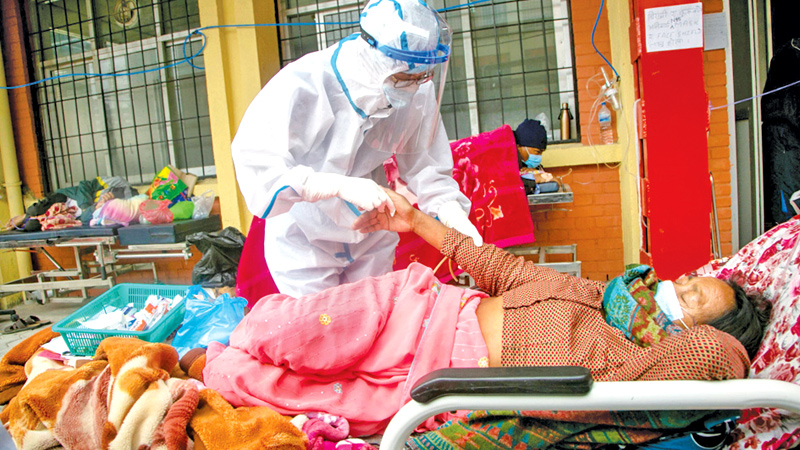High in the thin air of the Mount Everest Base Camp in Nepal, Sherpas and climbers used to walk freely from one group of tents to another, holding gatherings, singing and dancing. Now the Sherpas who escort climbers to the summit have a new job: enforcing unofficial social-distancing rules. “Climbing Everest is always a matter of life and death,” says Phunuru Sherpa. “But this year the risk has been doubled due to COVID.”
Already, dozens of people with suspected COVID-19 have been evacuated by helicopter. The outbreak reflects a broader one across Nepal, which shares a long, porous border with India. Daily confirmed cases in the Himalayan nation increased thirtyfold from April 11 to May 11, when 9,300 infections were recorded. It’s a grim omen of how India’s devastating COVID-19 crisis may be turning into an even bigger global emergency.
As countries around the world airlift oxygen, vaccines and medical supplies to India, they are also closing their borders to the world’s second most populous country. It may already be too late. The B.1.617 variant of the virus, first detected in India, has now been found in 44 countries on every continent except Antarctica—including Nepal, the US and much of Europe. Scientists say it could be more infectious and better at avoiding humans’ immune systems. On May 10, the World Health Organization declared it a variant of “global concern.” And because only around 0.1 per cent of positive samples in India are being genetically sequenced, “there may well be others that have emerged,” says Amita Gupta, deputy director of the Johns Hopkins University Center for Clinical Global Health Education.
The true scale of the COVID-19 outbreak in India is impossible to accurately quantify. Officially, confirmed daily cases are plateauing just under 400,000 but remain higher than any other country has seen during the pandemic. Experts warn that the real numbers are far bigger, and may still be rising fast as the virus rips through rural India, where two-thirds of the population lives and where testing infrastructure is frail. - Time


